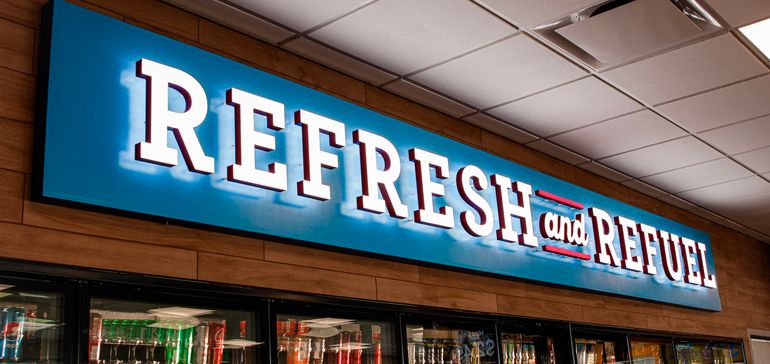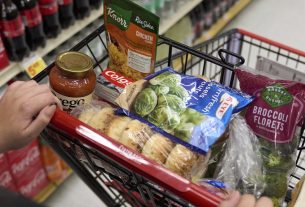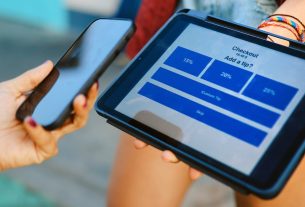Parkland USA is in the midst of a technology overhaul, introducing self checkout stations across many of its company-owned c-stores.
The pilot for the U.S. division of the international fuel and c-store company will initially cover a handful of locations. From there, it plans to expand to over a quarter of its stores in the initial rollout. The plan is to eventually bring these upgrades to most of its company-owned footprint — and hopefully, to some of its franchised locations, as well, said Jay Erickson, chief operating officer with Parkland USA.
The impetus for this move is twofold. First, Parkland wanted to improve and speed up the customer experience in its stores. And second, the company needed to update the front ends at many of its stores anyway, since a series of acquisitions left the chain with a hodgepodge of technology.
“We did nine acquisitions last year, which was about three times more acquisitions than we thought we were gonna do,” Erickson said in an interview. “And then over the last three years, we’ve probably done 21 acquisitions. So any time you do that many acquisitions, you inherit a lot of different technology.”
With this, Parkland joins other major chains like Circle K, Wawa and Sheetz that have expanded beyond manned checkouts. The convenience space as a whole has been moving more toward automated checkout options, including self checkout and even frictionless technology as consumer demands, labor realities and operational need continue to evolve.
Selecting the self checkout technology
Permission granted by Parkland USA
Since speed was a big consideration, self-checkout machines were a natural technology to pursue.
“I don’t know about you, but if I go into a store and there’s a huge line, the first thing I’m doing is looking to see, does this place have a self checkout,” said Erickson.
And it’s not just about getting shoppers through the checkout quicker, even though that’s certainly important. Parkland USA wants to speed up the turnover across every aspect of the customer journey.
“Getting in and getting out are very, very important,” Erickson said. “We wanted to reduce the lines in the queues. We wanted to turn over our pumps. And our parking. If you pull into our store and all of our parking spots are full, you’re probably gonna go somewhere else.”
For its first foray into this technology, Parkland USA ended up choosing NCR, the world’s largest self-checkout vendor, according to research firm RBR.
Part of the appeal was that the machines are so widely used, meaning many customers would come into the stores feeling comfortable using them.
“You can train people on how to use any anything, but it takes time,” Erickson said. “And if they can come in and see something that they are already comfortable with and it’s not, it’s not imposing.”
And these weren’t the only considerations. Parkland USA leaders wanted a self checkout system that could expand with the company, that had a great kitchen production system for its growing food service division and the ability to add many more items to the system. It also needed to be reliable and easy to fix.
“Convenience stores are a very challenging and tough environment,” Erickson said. “They get lots of dust, they get lots of drinks that get spilled, and there’s not a lot of space. You get stores that get hot. And so from a technology standpoint, it’s a challenge to roll out.”
They found in NCR a system that could stand up to those challenges, and that was virtualized, which means most of the work is done in centralized servers, and the actual terminals can often be fixed from those central locations instead of needing to send someone out to the physical store to address problems.
A carefully structured rollout
The company is testing this new technology at stores with each of its fuel brands to make sure there are no problems with the integration. It started with a large truck stop using Sinclair. That was followed by a smaller site with Philips, then a larger, more complex one using the same brand. They will round out the test by getting Shell, Marathon, Exxon and On The Run locations up and running.
“Once we get those certified and piloted and working and we know that everything’s good, then we can get a little bit more aggressive with our rollout schedule,” said Erickson.

Permission granted by Parkland USA
He said the full rollout could begin as early as sometime in the first quarter of 2023. Four sites are currently operational, according to a spokesperson, with 22 more expected to be active by the end of February. The company plans to include 55 stores in the first wave, but that could grow.
“We have roughly 213 company-owned, company-operated stores. We would love to get self checkout into a majority of those locations,” said Erickson. “We also have about 450 dealers that we do business with. And so what we’d love to do is offer them a technology package as well. And so we could see the technology package growing into our dealers as well. So 55 is really kind of the first phase.”
Once operational, the self-checkout area of a store will be located near the traditional checkout, and will consist of between two and four kiosks for customers to use.
So far, the pilot seems to be going well both for customers and for Parkland’s in-store teams.
Quoting a report he’d gotten from a manager at one of the Idaho stores, Erickson said, “Love how it helps the customer flow within the store. Allows more people to get in and get out quickly. Notice in our early mornings, we have a lot more people come in and use them, especially due to people trying to get to work and being in a hurry.”
And it’s not just the traffic flow — the self-checkout machines are also changing how the workers interact with the store and customers.
“They’re really actually able to take better care of the customer with the self checkout,” Erickson said.
While customers looking to buy items like alcohol or tobacco can still go through a regular line, the self-checkouts are also set up to notify workers when someone there is trying to buy those items. They can also prepay for fuel from the kiosks.
The company is also looking at expanding its payment offerings through the self-checkout kiosks, including tap-and-go and the ability to use mobile phones for payments, or even using automated clearing house (ACH) payments to save the company money and give discounts to customers.
“What we want to be able to do is make it quicker for people to come and consume our services, whether it be fuel or something inside the store,” Erickson said.



